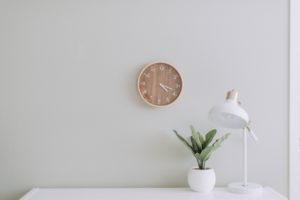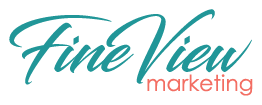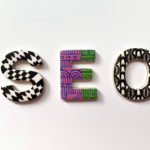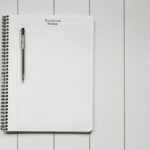How Does Self Storage Website Design Lead to Higher Conversions?
If your self storage website hasn’t captured the attention of a user in 10 seconds, it’s probably not going to. What does that mean to you in terms of having a self storage website design that will lead to higher conversions? It means that, if you want higher conversions from your website, you have to use design subtleties to drive visitors on their conversion journey.
Everything a prospective customer sees first influences their buying decision. The elements of your brand should reveal your capabilities in an engaging, polished manner. You never get a second chance to make a first impression.
Here are a few surprising statistics that show the impact of a well-designed website on your business.

- You have approximately 10 seconds to leave a positive impression and tell visitors what they’ll gain from your site and your company. After this time (and frequently before), they’ll leave.
- Web design research found that overcrowded web design is the most common mistake small businesses make. It confuses visitors, causing them to hit the back button.
- 38% of website visitors will stop engaging with a website if the design and layout are confusing or unattractive.
- 48% of people consider a website’s design as the top factor in determining credibility.
- With only 15 minutes to consume content, 59% of visitors prefer browsing through beautifully designed content as opposed to bewildering, poorly designed content.
If these statistics motivate you to redesign your self storage website for higher conversions, here are some suggestions to get you started toward your goals.
Design Your Website for Higher Conversions
Optimize your site elements with aesthetics to derive a balance that is engaging as well as informative.
Emphasize Landing Page Design Elements
Your self storage website landing page should be streamlined and visually appealing to minimize bounce rate.
Images
- Use images with human faces to communicate a sense of empathy.
- Optimize images for ideal loading speed without sacrificing quality.
- Use large web banner images above the fold.
Typography
- Meaning: Be sure that written language conveys meaning by being legible, readable, and visually appealing.
- Font: Helvetica is one of the world’s most popular fonts, and there are more than 100 variations!
- Letter Spacing: Any decisions made with letter-spacing should be about making text as easy to read as possible.
- Line Spacing: Line spacing is commonly measured as a percentage of font size. Conventional wisdom is that line spacing of 130%-150% is ideal for readability. In fact, anything from about 120% up to 200% is considered acceptable.
- Line Length: Optimal line length for body text is 50-60 characters per line.
Whitespaces
In order to focus on certain web page elements, like call-to-action (CTA) buttons, they should be surrounded with white spaces. White spaces are areas of a self storage website that are purposely left blank. White spaces do not necessarily have to be white. Experiment with any color; the goals are clarity and simplicity.
Colors
Use one bright color as a focal point to draw attention, no matter where you place that element in your design.
Colors are typically associated with mood and the impact that you want to convey to your audience. Here are some general color associations.
- Black: Power and strength
- White: Purity and innocence
- Blue: Trust, loyalty, wisdom
- Purple: Royalty, respect, wisdom
- Red: Love, excitement and confidence
- Green: Tranquility, optimism and good luck
- Orange: Warmth, excitement, and energy
- Yellow: Brightness and warmth, attention-grabbing
User Experience (UX) Elements and User Integration (UI) Should be Clear and Simple
UX and UI are both critical components that can make or break website. They work closely together to decide how a product looks and functions. To explain in basic terms, UX design determines how the interface works and how people interact with it, and UI design creates an interface’s look and feel.
According to webflow.com, “UX design is the overall experience a user has with a company’s products or services. Good and bad UX design is determined by how easy or difficult it is to interact with each element or aspect of a product or service.” For example, your contact page should be simple, uncluttered and easily navigated – not so confusing that your customer loses interest and leaves.
UI design, on the other hand, is focused on the look and layout — how each element of the product will look, including buttons, placeholders, text, images, checkboxes, and any visual interface elements that customers interact with. The design should be clean and uncomplicated leaving no question as to how to complete the fields.
The more choices people have, the longer it takes them to come to a decision. Make navigation simple by cutting back on the number of options being presented to users.
- Keep the stock images and over-the-top design elements to a minimum.
- Don’t overuse bulky, confusing font elements.
- Implement a clear and simple CTA.
- Stick to one CTA per page.
- Place the CTA in the middle of an area surrounded by white space.
- Make the navigation bar as simple as possible.
You want to limit distractions while preserving functionality.
Optimizing SEO Elements for Organic Traffic and Higher Rankings
The best practices of web design differ on the use of specific pages for optimizing SEO. In any case, targeting landing pages for organic traffic is always beneficial. It allows web crawlers to easily index these pages in their databases.
Some key SEO-friendly strategies include:
- Using long-tail keywords to attract a more qualified audience.
- A streamlined content structure that includes paragraphs, headings, and links.
- Providing a responsive mobile experience.
- Ensuring that pages load in the shortest possible time.
Present Elements for Real-Time Customer Support
When shopping was limited to brick and mortar stores, customers could easily receive assistance. Any problems could be almost immediately resolved right there in the store. Even though e-commerce has reshaped the shopping landscape, customers still expect the same level of resolution. This is why real-time customer support is essential.
With real-time customer support, live chat tools and chatbots can handle the problems at the actual time they occur and not hours or days later. A small widget design, silently resting in the corner of the screen, shows up only when necessary.
Design benefits of these tools include:
- Customizing the chat widget design according to brand voice and theme.
- Artificial Intelligence (AI) chats that recognize keywords in queries and deliver canned responses.
- Critical information is in the backend of the chat so that teams can review and resolve the issue.
- Visitors can be qualified, routed, and converted to accelerate sales.
Summary
Don’t cut corners on design; hire a professional. If you want more conversions from your self storage website, you have to use design subtleties to drive visitors on their journey. Your website design will reflect your brand and the quality of your business. It should convey cohesiveness in the elements of your business: the brand, the images, the staff, and your customers.


